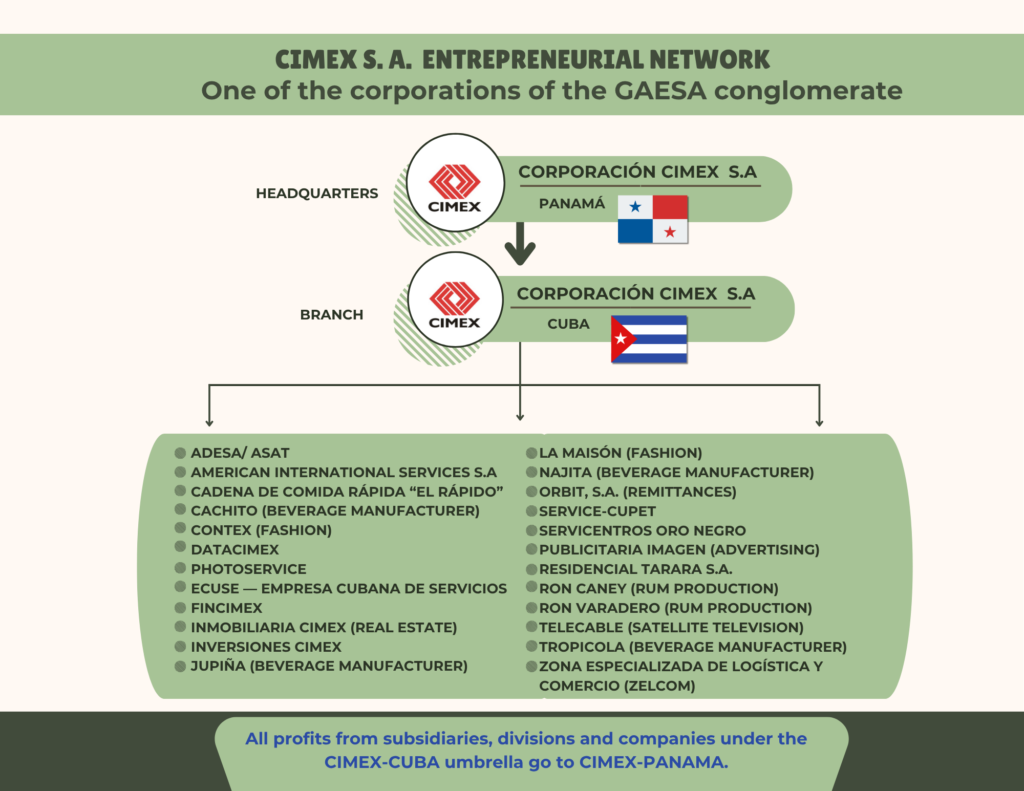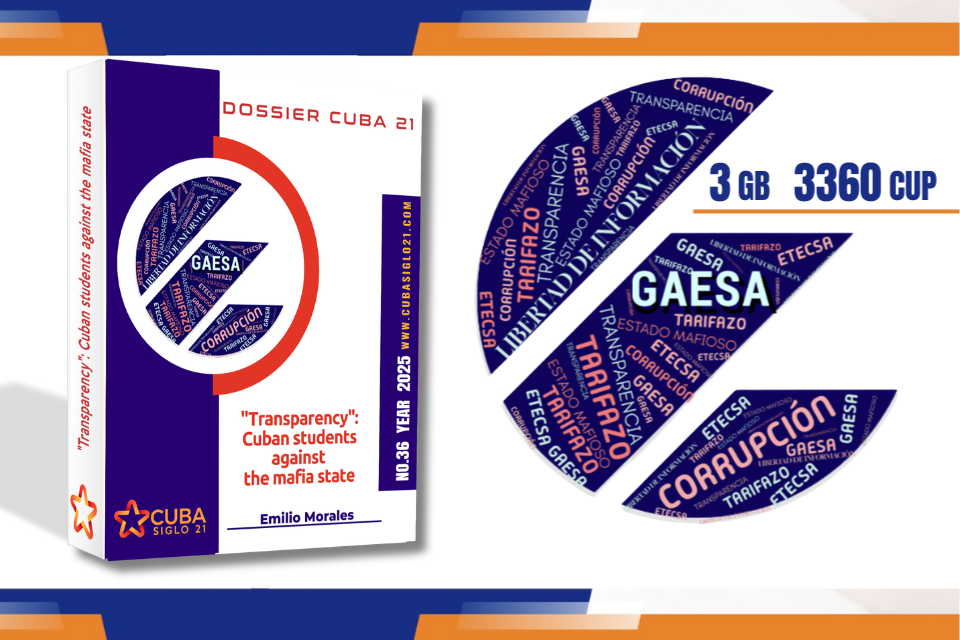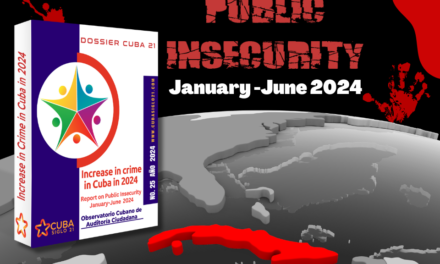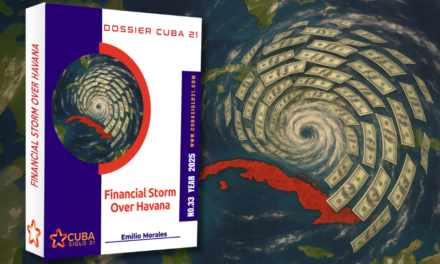Descargar informe completo
Download Complete Report in English
Listado de Empresas relacionadas con GAESA
The recent wave of student protests in Cuba, triggered by the abusive increase of (Cuba’s communication monopoly) ETECSA’s internet rates, has contribute to expose a deeper and more systemic truth: the oligarchic and opaque domination of the GAESA business conglomerate over the national economy, particularly over strategic sectors such as telecommunications. Under the cry of “Transparency!”, university students have not only questioned the abuses of a monopolistic company but have also questioned, indavertenly, the heart of the current Cuban economic and political model, dominated by a mafia elite that acts outside any accountability.
The popular indignation over the so-called “tarifazo” of ETECSA is not only explained by its brutal economic impact on an impoverished citizenry, but also by the unanswered questions it raised: Who really controls ETECSA? Where are its multi-million dollar revenues? Why is it not accountable either to the State or to the people? These questions are not limited to one company but point directly to the business apparatus that controls it: GAESA, the military-controlled conglomerate that manages 70% of the economy and 95% of the country’s foreign currency finances.
ETECSA, far from being a state-owned public enterprise as the official discourse proclaims, is an institution in the hands of GAESA, the super conglomerate whose real owners and shareholders are anonymous and act through opaque business structures such as RAFIN S.A. and BFI. This model reproduces the logic of GAESA’s economic exploitation: extracting resources from the population – in this case through telephone recharges paid by the exile – and diverting them to hotel, real estate, military and repressive companies without any type of institutional supervision or control.
One of the most worrying questions is the way in which ETECSA’s revenues are used. These are used to subsidize the communications of the repressive apparatus of the regime -MININT, FAR, PCC, UJC- and to finance hotel megaprojects with low profitability and little social impact. In other words, citizens pay disproportionate rates to sustain the repression that watches over them and to expand the real estate empire of an elite disconnected from the reality of the country.

Source: Havana Consulting Group
The demand for transparency, therefore, cannot stop at ETECSA. As the investigation shows, this company is only the tip of the iceberg. CIMEX, Gaviota, FINCIMEX, ZEDM, among others, are part of a network of companies controlled by GAESA that not only are not subject to public audit, but also transfer their profits to foreign accounts, mainly in Panama, through corporations such as CIMEX-Panama. Remittances, telephone services and tourism profits are systematically diverted to these tax havens, leaving the nation bankrupt and its inhabitants mired in increasing misery.
The consequences of this regime of governance are devastating: collapse of the health and transportation systems, galloping inflation, chronic shortages of food and medicine, productive paralysis and a massive exodus. Meanwhile, GAESA has managed to shield its finances, remaining outside the control of the Office of the Comptroller General of the Republic, the Council of Ministers, the Communist Party and even the Ministry of the Armed Forces. In Cuba, neither the state nor the party has power over GAESA.
In Cuba, the power elite that controls GAESA actually rules the country while the state and party officials, both civilian and military, merely govern the country following its guidelines.
In this scenario, the student protest represents a turning point. It is the spark of a citizen conscience that begins, little by little, to identify the real enemy: a mafia state that appropriates national resources, imposes abusive tariffs and represses anyone who dares to ask for explanations. The slogan “Transparency!” is, in this context, a revolutionary demand: not only does it demand to know what ETECSA does with its income, but also who are the real owners of the country and who benefit from their decisions. With those demands, what began as an economic and social conflict has thus evolved, essentially, into a political one.

The document concludes that, although the immediate outcome of the protests is uncertain, an irreversible change has already taken place: the veil of silence that protected GAESA has begun to tear. Today the university students -grandchildren of a revolution that no longer exist- are demanding accountability from a power that claims to be revolutionary and popular, but in practice behaves like a kleptocratic oligarchy. Their example could trigger similar actions in other sectors of society, giving way to sustained pressure for the accountability of all these institutions, public access to information and the recovery of national sovereignty over the country’s strategic resources appropriated by these companies and their “anonymous” owners.
The national student unrest has made it possible for other national sectors to demand, with firmness and clarity, not only the transparency of ETECSA, but also a complete and public audit of the entire business network of GAESA. The citizenry has the right to know who is enriching themselves with their poverty, where the billions in remittances and cell phone recharges, salaries of the medical brigades and remittances go, and who authorizes the investment of those funds in hotels that remain empty while the hospitals collapse, the country is left without electricity and famine advances.







